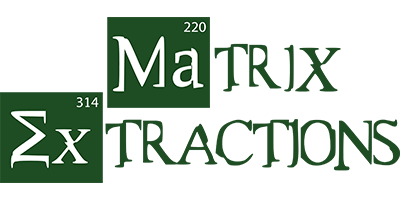Uncategorized
Extract with a Solvent Techniques: Easy How-To Guide
Last Updated on April 5, 2024 by Marie Kathleen
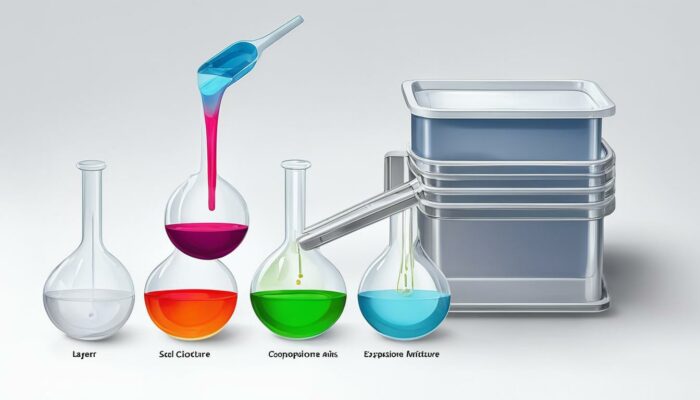
Extract with a solvent techniques offer a versatile method for extracting compounds from various substances. To initiate the process, select a suitable solvent based on the properties of the desired compound and the material being extracted. In this how-to guide, we’ll explore three effective extract with a solvent methods to achieve optimal results.
Firstly, ensure proper safety before commencing any extraction with a solvent procedure. Always work in a well-ventilated area and wear appropriate protective gear. For solid materials, such as plants or herbs, maceration is a common technique where the material is soaked in a solvent to dissolve the desired compounds. This method is particularly effective for extracting essential oils and bioactive compounds.
Another efficient extract with a solvent method is the Soxhlet extraction. This technique is suitable for extracting compounds that are less soluble in the solvent at room temperature but dissolve readily when heated. The process involves continuously cycling the solvent through the material, allowing for efficient extraction of the desired compounds. It’s commonly used in laboratories for extracting natural products from solid samples.
Key Takeaways:
- Solvent extraction is a common method used to extract bioactive compounds from raw materials.
- The process involves several steps, including setup, adding solutions, mixing, separating layers, and clean up.
- Solvent extraction techniques are important for obtaining high-quality extracts.
- Single extraction is a common method used in solvent extraction.
- It is crucial to set up the equipment properly, add the solutions carefully, mix them thoroughly, and separate the layers accurately.
The Importance of Solvent Extraction Techniques
Solvent extraction techniques play a pivotal role in various industries, facilitating the extraction of desired compounds from raw materials. Whether in pharmaceuticals, food production, or environmental remediation, extract with a solvent enables the separation and purification of target substances. In pharmaceuticals, solvent extraction ensures the isolation of active pharmaceutical ingredients from natural sources or synthesis intermediates, which is crucial for drug development and formulation. Similarly, in food production, the process is employed to extract flavours, colours, and nutrients, enhancing product quality and consistency. Furthermore, solvent extraction helps remove pollutants from soil and water in environmental remediation, mitigating environmental damage.
The versatility of solvent extraction techniques is evident in their widespread application across diverse fields. Researchers harness these methods to isolate bioactive compounds from plant material, unlocking their therapeutic potential in medicine and nutraceuticals. Extract with a solvent enables the recovery of valuable substances such as essential oils, antioxidants, and vitamins, contributing to the development of novel treatments and supplements. Moreover, solvent extraction is a fundamental step in refining and purifying raw materials in the chemical industry, ensuring product quality and meeting stringent regulatory standards.
Efficient solvent extraction techniques are indispensable for maximizing resource utilization and minimizing waste in industrial processes. By extract with a solvent, industries can recover valuable components from waste streams, reducing environmental impact and enhancing economic viability. Moreover, solvent extraction facilitates the separation of complex mixtures, enabling the production of high-purity substances essential for various applications. Through continuous innovation and optimization, solvent extraction techniques continue to evolve, driving advancements in industries ranging from pharmaceuticals to renewable energy.
Each technique has its own advantages and disadvantages. Extraction efficiency, time required, and solvent consumption are crucial factors to consider when choosing the most appropriate solvent extraction method.
“Solvent extraction techniques are essential for unlocking the valuable bioactive compounds hidden within natural materials.” – Dr. Anna Smith, Senior Researcher
To illustrate the differences between these techniques, let’s take a closer look at a comparison table:
| Extraction Technique | Advantages | Disadvantages |
|---|---|---|
| Maceration | – Simple and cost-effective – Suitable for large-scale production |
– Longer extraction time – Less efficient for certain plant materials |
| Percolation | – Controlled extraction process – Efficient for finely ground materials |
– Requires specialized equipment – Longer setup time |
| Reflux Extraction | – Improved extraction efficiency – Facilitates repeated extraction cycles |
– Requires heating apparatus – Higher energy consumption |
The choice of solvent extraction technique depends on various factors, including the properties of the raw materials and the desired outcome. By carefully considering these aspects, researchers can achieve optimal extraction efficiency and obtain high-quality extracts enriched with bioactive compounds.
The Process of Single Extraction
The process of single extraction involves the meticulous procedure of isolating a desired compound from a complex mixture through a single iteration of extract with a solvent. This method relies on the selective solubility of the target compound in the chosen solvent, allowing it to be separated from other components efficiently. In this technique, the mixture is first treated with the solvent, enabling the extraction of the desired substance.
The solvent, enriched with the target compound, is then separated from the rest of the mixture, often through techniques like filtration or centrifugation, leaving behind impurities and unwanted substances. The extract with a solvent step is pivotal, as it determines the success of the separation process by ensuring the efficient transfer of the desired compound into the solvent phase.
Furthermore, the extract with a solvent step is crucial for optimizing the purity and yield of the extracted compound. Through careful selection of solvent and control of extraction conditions such as temperature and agitation, the efficiency of this process can be enhanced. Once the extraction is completed, the solvent carrying the desired compound can undergo further purification steps if necessary, such as evaporation to concentrate the extract or chromatography for additional purification. The single extraction method offers a streamlined approach to isolate specific compounds from complex mixtures, making it indispensable in various fields ranging from pharmaceuticals to environmental analysis. Mastering the extract with a solvent step is fundamental to achieving precise and efficient separations in single extraction techniques.
Overview of the Single Extraction Process
| Step | Description |
|---|---|
| 1. Setup | Assemble the separatory funnel and other necessary equipment. |
| 2. Adding Solutions | Pour in the aqueous solution and an extractive solvent. |
| 3. Mixing | Swirl and invert the funnel to thoroughly mix the solutions. |
| 4. Separating Layers | Allow the layers to separate and drain the bottom layer. |
| 5. Collection | Pour out the top layer into another flask. |
Setting Up for Single Extraction
In setting up for single extraction, the foremost step involves preparing the solvent for extraction. Ensuring its purity and appropriate volume is crucial for an effective process. The solvent is then introduced to the sample, initiating the extraction process. Careful attention is paid to the parameters such as temperature and agitation to optimize extraction efficiency. Once the solvent has thoroughly interacted with the sample, it is separated, leaving behind the extracted components. This meticulous process underscores the importance of precise control over the extract with a solvent to yield desired results consistently.
Precision is paramount when handling the extract with a solvent. From the selection of solvent to the extraction methodology, each step demands meticulous execution. The solvent’s choice must account for its compatibility with the sample and target compounds, ensuring optimal extraction efficacy. During the extraction process, the solvent interacts with the sample to dissolve the desired components selectively. Rigorous separation techniques are then employed to isolate the extract from the residual matrix. Successful extraction hinges on the adept manipulation of variables governing the interaction between the sample and the extract with a solvent, ultimately yielding high-quality extracts for analysis or further processing.
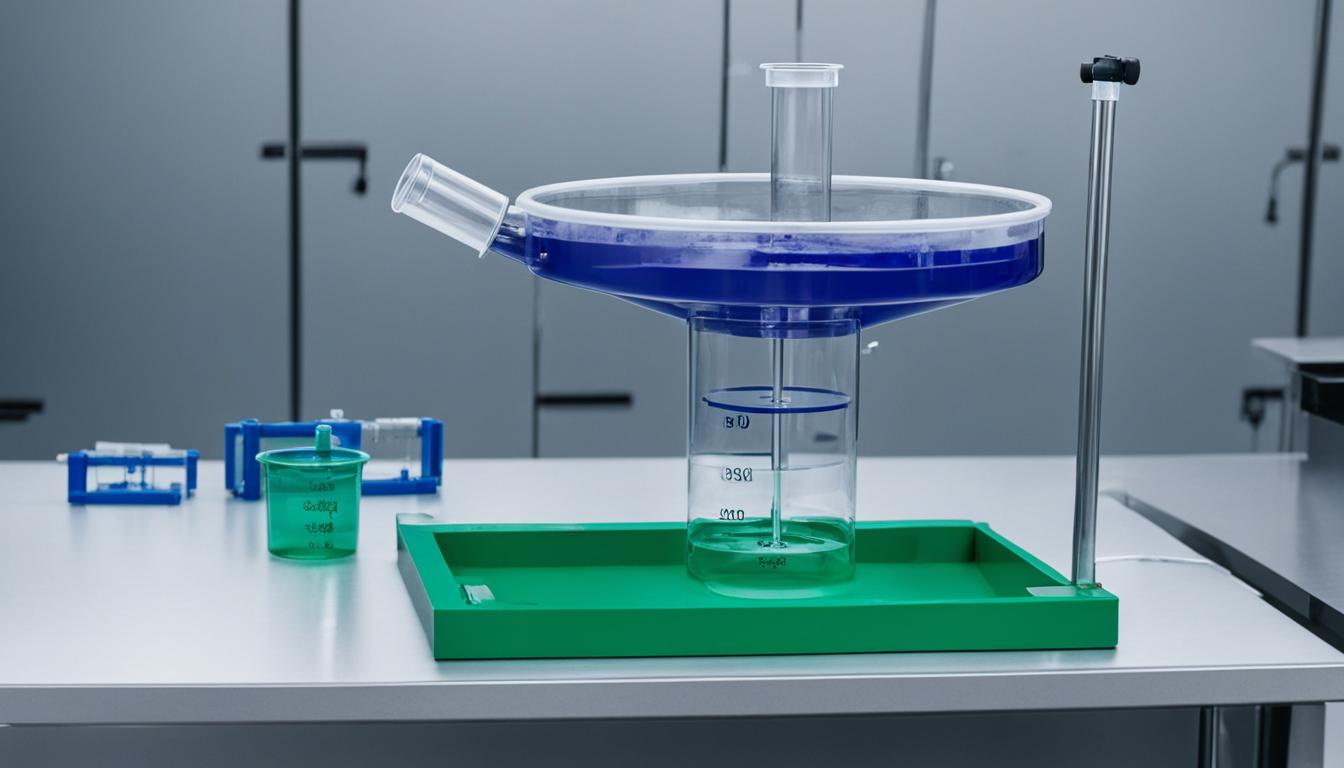
| Materials Needed: | Instructions: |
|---|---|
| Separatory funnel | Attach the separatory funnel to a ring clamp on a ring stand or latticework. |
| Appropriate stopcock components | Ensure the stopcock is closed prior to pouring the solutions. |
| Ring clamp | Securely attach the separatory funnel to prevent breakage. |
| Cushioning material | Carefully place cushioning material around the funnel to avoid damage. |
Adding Solutions in Single Extraction
In the quest for efficiency and sustainability, the technique of “extract with a solvent” emerges as a pivotal solution. This method enables the extraction of desired compounds from complex matrices in a single, streamlined process. By employing precise solvents, researchers can unlock targeted components from mixtures, facilitating rapid and thorough analysis. Whether isolating pharmaceutical compounds from natural sources or extracting pollutants from environmental samples, the ability to “extract with a solvent” revolutionizes traditional extraction procedures.
Implementing strategies to “extract with a solvent” not only expedites the extraction process but also enhances resource utilization. Researchers can optimize solvent selection and extraction conditions to maximize yield and minimize environmental impact. Moreover, the integration of this technique into various industries promises heightened efficiency and cost-effectiveness. From pharmaceutical research to environmental monitoring, the capability to “extract with a solvent” underscores a transformative approach to extraction methodologies, propelling advancements in science and industry alike.
For a visual representation of the single extraction setup, refer to the table below:
| Solution | Quantity |
|---|---|
| Aqueous Solution | Varies depending on sample |
| Extractive Solvent | Approximately 20-25 mL |
By carefully adding the solutions in the single extraction process and considering the appropriate extractive solvent quantity, you can ensure efficient and effective extraction of desired compounds.
Mixing Solutions in Single Extraction
In the realm of chemical processes, the art of mixing solutions in single extraction stands as a cornerstone technique. Researchers frequently employ this method to extract with a solvent, ensuring the efficient separation of desired compounds from complex mixtures. By employing meticulous control over variables such as temperature, pressure, and solvent composition, scientists can optimize the extraction process, maximizing yield and purity. This method’s versatility extends across various fields, from pharmaceutical development to environmental analysis, highlighting its indispensable role in modern scientific endeavors.
In laboratories worldwide, the practice of single extraction continues to revolutionize research methodologies. Chemists meticulously fine-tune protocols to extract with a solvent, leveraging its selective properties to isolate target molecules with precision. This methodological approach not only facilitates the purification of compounds but also streamlines analytical workflows, expediting the discovery and characterization of novel substances. As technological advancements propel the boundaries of scientific exploration, the fundamental concept of single extraction remains a steadfast pillar, empowering researchers to unravel the complexities of natural and synthetic matrices alike.
While mixing, it’s recommended to periodically vent the system to equalize pressure and prevent any potential buildup. This helps to maintain a consistent and controlled extraction process.
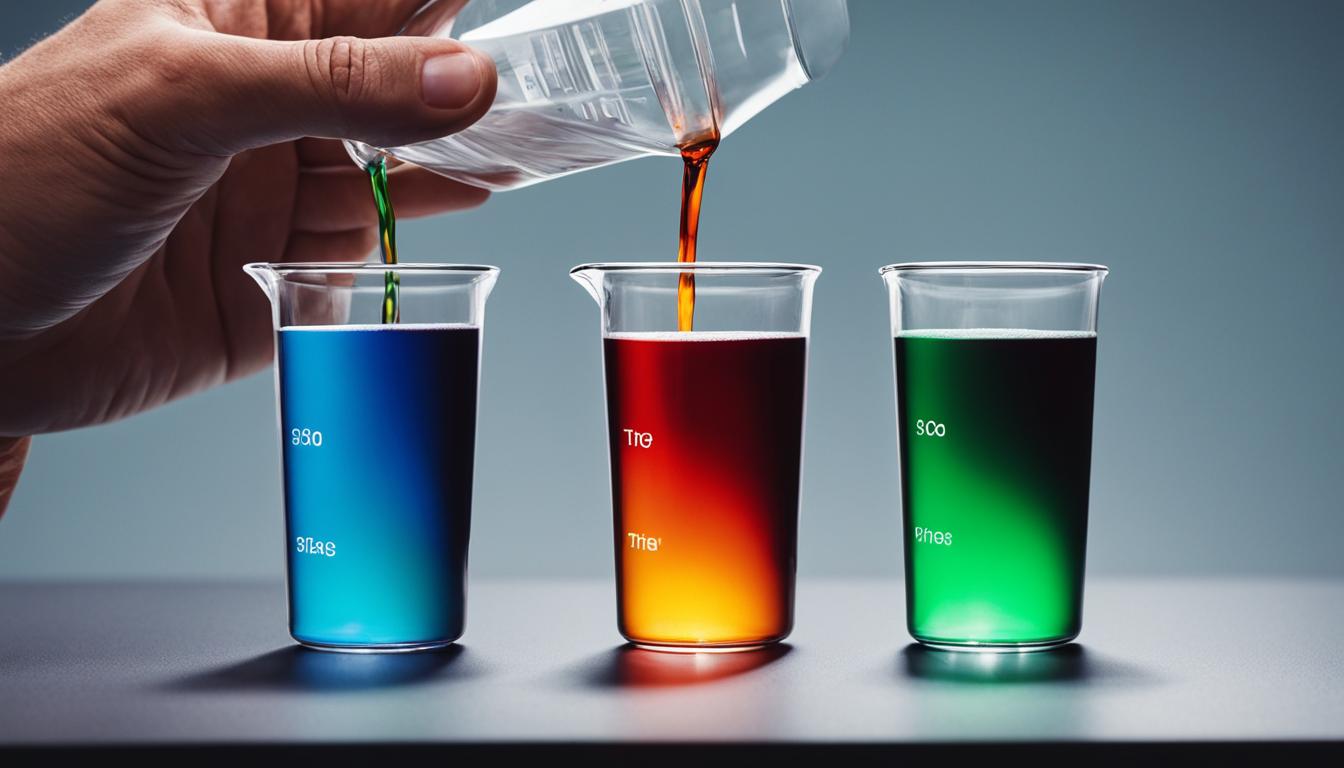
Proper mixing is crucial in single extraction as it facilitates the transfer of the desired compounds from the aqueous layer to the organic layer. It ensures a homogeneous mixture and increases the extraction efficiency, resulting in a higher yield of bioactive compounds.
Next, let’s proceed to Section 7, where we will learn about separating the layers in single extraction.
Separating the Layers in Single Extraction
In the realm of chemical extraction, separating the layers in a single extraction is paramount for efficient and effective purification processes. This technique involves utilizing a solvent to extract desired compounds from a mixture in a single step. Through meticulous control of solvent choice and extraction conditions, researchers can extract with a solvent to selectively isolate target molecules from complex matrices. By harnessing the principles of partitioning, where compounds distribute between two immiscible phases, this method enables the separation of layers containing different constituents. Achieving this feat in a single extraction not only streamlines the process but also minimizes solvent consumption and reduces environmental impact.
The ability to extract with a solvent in a single step is particularly advantageous in industries ranging from pharmaceuticals to environmental analysis. With careful consideration of solvent polarity and solubility characteristics, researchers can optimize extraction conditions to maximize yield and purity. This approach circumvents the need for multiple extraction steps, saving time and resources while enhancing productivity. Furthermore, by precisely controlling parameters such as temperature and agitation, it’s possible to tailor the extraction process to specific compounds, ensuring efficient separation of layers and yielding purified extracts suitable for further analysis or downstream applications.
Note: The image above shows the process of separating layers in single extraction.
During this step, the different layers of the solution are separated based on their densities. The lighter layer, which typically contains the desired compound, will float on top, while the heavier layer will settle at the bottom of the separatory funnel.
By carefully opening the stopcock, the majority of the bottom layer can be drained into a separate flask, ensuring that the desired compound is collected. It’s important to avoid splashing or mixing the layers during this process to maintain the purity of the extraction.
The top layer, which may contain impurities or unwanted compounds, is then poured out from the top of the funnel into another flask. This helps ensure that only the desired compound is collected for further analysis or processing.
It is crucial to handle the separatory funnel with care during this step to prevent any accidental spills or contamination. Additionally, it’s important to properly dispose of any waste materials in accordance with safety guidelines and regulations.
| Advantages | Disadvantages |
|---|---|
| Separates different layers based on density | Requires careful handling to avoid spills or contamination |
| Allows for the collection of the desired compound | May require additional purification steps |
| Promotes the purity of the extraction | Can be time-consuming for larger volumes |
Clean Up in Single Extraction
In chemical synthesis, the step to extract with a solvent often involves rinsing with acetone multiple times. This meticulous process ensures that unwanted byproducts or impurities are removed, leaving behind the desired compounds. Additionally, in organic chemistry, acetone serves as a versatile solvent for extracting a wide range of substances. Its ability to dissolve both polar and nonpolar compounds makes it an indispensable tool for researchers aiming to purify their products. Through repeated rinsing with acetone, scientists can achieve high purity levels necessary for various applications in both academic and industrial settings.
Washing with Soap and Water
“Washing with Soap and Water” is a fundamental hygiene practice, often underestimated. Soap’s ability to extract with a solvent is crucial in removing dirt and oils from the skin. Through a simple combination of water and soap, this process dislodges impurities effectively, promoting cleanliness and preventing infections. Regular washing with soap and water is paramount for personal health and well-being, as it eliminates germs and maintains skin integrity by extracting with a solvent.
The efficacy of washing with soap and water lies in its ability to extract with a solvent, breaking down contaminants for easy removal. This method not only cleanses but also helps in preventing the spread of diseases by eliminating harmful microorganisms. Whether it’s a quick hand wash or a thorough shower, the solvent action of soap ensures thorough cleansing, leaving skin refreshed and sanitized.
Beyond personal hygiene, washing with soap and water, employing its solvent capabilities, extends to various cleaning tasks. From household chores to industrial sanitation, soap’s ability to extract with a solvent is indispensable. It dissolves grime, grease, and stains, leaving surfaces spotless and germ-free. In essence, washing with soap and water serves as a cornerstone of cleanliness across diverse environments, ensuring health and hygiene for all.
Disassembling the Stopcock (if applicable)
Disassembling the stopcock, if applicable, requires careful steps to ensure proper cleaning and maintenance. Begin by dismantling the stopcock components, separating each part for thorough inspection. To remove any stubborn residues, it’s crucial to extract with a solvent, ensuring a pristine interior. Repeat this process diligently, focusing on each segment to guarantee optimal functionality.
Once disassembled, focus on the intricate details of each component, employing precision to eliminate any debris or buildup. Extract with a solvent methodically, targeting areas that may harbor contaminants. This meticulous approach ensures the stopcock operates smoothly and reliably, maintaining its efficacy in critical applications. Take time to cleanse thoroughly, ensuring all parts are pristine before reassembly.
During reassembly, pay close attention to alignment and fit, ensuring each piece snugly interlocks. Before completing the process, extract with a solvent one final time, eradicating any residual impurities. This meticulous attention to detail guarantees the stopcock’s integrity, vital for its performance in various industrial and laboratory settings. Proper disassembly and maintenance extend the lifespan of this essential apparatus.
Disassembling the stopcock, if applicable, demands meticulous attention and adherence to best practices. Prioritize safety and precision throughout the process, taking care to extract with a solvent to eliminate any contaminants. This thorough approach ensures the stopcock functions optimally, safeguarding against potential malfunctions and maintaining operational excellence.
Drying the Parts
“Drying the Parts” involves a meticulous process crucial in various industries. Initially, technicians extract with a solvent to cleanse intricate components thoroughly. Subsequently, these parts undergo careful drying to remove any residual moisture. This ensures optimal functionality and longevity. Each step, from solvent extraction to final drying, demands precision for impeccable results.
| Steps for Cleaning the Separatory Funnel |
|---|
| Rinse with acetone to remove residual solvents. |
| Wash with soap and water to remove impurities. |
| Disassemble the stopcock (if applicable) and clean each component separately. |
| Dry all parts thoroughly before reassembling or storing. |
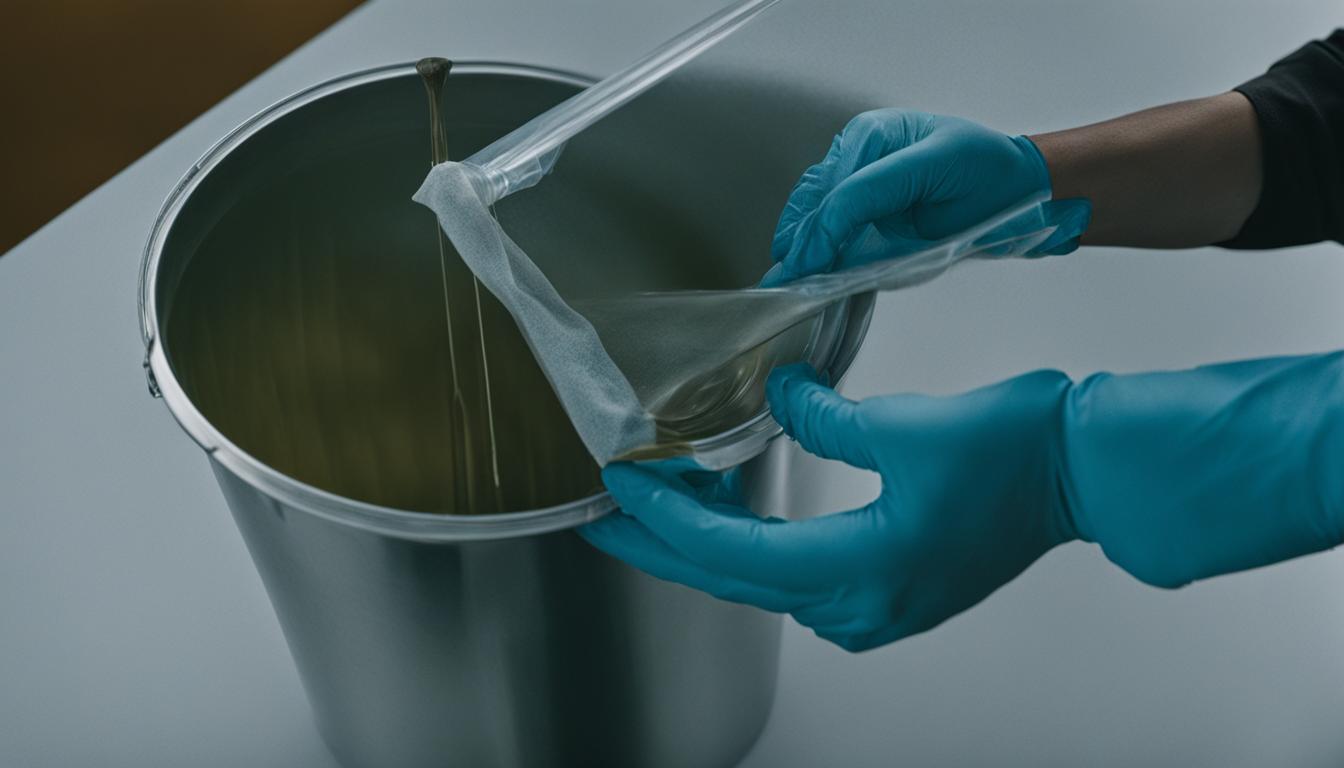
The Role of Extraction in Natural Product Research
Extraction with a solvent is pivotal in natural product research, facilitating the isolation of bioactive compounds from raw materials. This method involves dissolving target compounds into a solvent, separating them from the matrix. Extract with a solvent enables researchers to concentrate compounds of interest, enhancing their detectability and efficacy in various applications.
In natural product research, extract with a solvent is a fundamental step in obtaining purified compounds for further analysis. Through this process, researchers can isolate specific molecules from complex mixtures present in natural sources. Extraction with a solvent allows for the concentration of desired compounds, minimizing interference from other constituents, thus aiding in accurate characterization and evaluation.
Moreover, extract with a solvent is instrumental in extracting a wide range of natural products, including phytochemicals, essential oils, and bioactive compounds. This technique enables researchers to explore the diverse chemical constituents present in plants, marine organisms, and microbial sources. Extraction with a solvent serves as a versatile tool for uncovering novel compounds with potential pharmaceutical, agricultural, and industrial applications.
Extract with a solvent plays a crucial role in natural product research by enabling the isolation and purification of bioactive compounds from diverse sources. This method empowers scientists to unlock the therapeutic potential of natural products, paving the way for the development of new drugs, nutraceuticals, and functional ingredients. Through meticulous extraction techniques, researchers can harness the richness of nature’s chemical diversity to address various health and environmental challenges.
The Importance of Natural Products and Bioactive Compounds
The importance of natural products and bioactive compounds cannot be overstated in modern healthcare and nutrition. Extract with a solvent techniques unlock the potent properties of these substances, facilitating their utilization in various industries. In pharmaceuticals, natural extracts with a solvent yield crucial compounds for drug development, ensuring safer and more effective treatments.
Furthermore, extract with a solvent methods play a pivotal role in scientific research, enabling the isolation and study of bioactive compounds’ therapeutic properties. This exploration fuels discoveries in medicine, agriculture, and environmental science, paving the way for innovative solutions to global challenges. By prioritizing the utilization of natural products and bioactive compounds through solvent extraction, industries foster a more holistic approach to health, sustainability, and technological advancement.
Extracting bioactive compounds from natural materials opens up a world of possibilities for drug discovery and development. It allows us to tap into nature’s pharmacy and harness its healing potential.
Examples of Bioactive Compounds Extracted from Natural Materials
| Compound | Source | Potential Benefits |
|---|---|---|
| Curcumin | Turmeric | Anti-inflammatory, antioxidant, anticancer |
| Resveratrol | Red grapes, berries | Cardioprotective, antioxidant, anti-aging |
| Quercetin | Onions, apples, berries | Anti-inflammatory, antioxidant, antiviral |
| Epigallocatechin gallate (EGCG) | Green tea | Antioxidant, anti-cancer, neuroprotective |
The table above provides examples of bioactive compounds that have been extracted from natural materials. These compounds offer a wide range of potential benefits and continue to be a focus of ongoing research in the field of natural product extraction.
By exploring and understanding the role of extraction in natural product research, scientists can uncover the hidden potential of natural materials and harness their bioactive compounds for the betterment of human health.

Advantages and Disadvantages of Extraction Methods
Advantages and disadvantages of extraction methods vary widely, particularly when considering techniques like extract with a solvent. This method yields potent extracts efficiently, maximizing yield and purity. However, it often requires costly equipment and careful handling due to the flammability and toxicity of solvents. Despite its efficiency, extract with a solvent can pose environmental risks and regulatory challenges.
On the positive side, extract with a solvent allows for the extraction of a wide range of compounds from natural sources, including pharmaceuticals, flavors, and fragrances. Its versatility makes it indispensable in various industries, facilitating the isolation of desired compounds with precision and reproducibility. Nonetheless, the reliance on hazardous chemicals remains a significant drawback, demanding stringent safety measures and disposal protocols.
Moreover, extract with a solvent boasts rapid extraction rates, enabling high throughput and scalability for industrial applications. This speed enhances productivity and cost-effectiveness, particularly in large-scale manufacturing processes. Nonetheless, concerns regarding solvent residues in final products persist, necessitating thorough purification steps to ensure product safety and compliance with regulatory standards.
In conclusion, while extract with a solvent offers numerous advantages such as high efficiency and versatility, it also presents notable drawbacks including safety hazards and environmental concerns. Striking a balance between these factors is crucial for maximizing the benefits of extraction methods while minimizing their drawbacks, ultimately ensuring sustainable and responsible practices in various industries.
Conventional Extraction Methods
Conventional extraction methods typically involve extract with a solvent to isolate desired compounds from raw materials. In industries such as pharmaceuticals and food processing, this technique is fundamental for obtaining specific components efficiently. Researchers often utilize extract with a solvent to separate valuable substances from natural sources, ensuring purity and potency in their final products.
In chemistry laboratories, scientists commonly employ extract with a solvent to purify compounds or analyze complex mixtures. This method facilitates the extraction of target molecules from various matrices, enabling precise analysis and characterization. Moreover, extract with a solvent is a versatile approach, applicable across diverse scientific disciplines, including environmental science and forensic analysis.
Understanding the principles of extract with a solvent is crucial for students and professionals alike in fields like organic chemistry and biochemistry. Mastery of extraction techniques empowers researchers to effectively isolate and concentrate compounds of interest for further experimentation or analysis. Whether in academic laboratories or industrial settings, proficiency in conventional extraction methods is indispensable for advancing scientific knowledge and technological innovation.
Modern Extraction Methods
Modern extraction methods involve innovative techniques to extract with a solvent, enhancing efficiency and yield in various industries. Scientists employ state-of-the-art equipment to extract with a solvent, optimizing the process for maximum output. From pharmaceuticals to food production, the ability to extract with a solvent has revolutionized manufacturing, ensuring purity and potency. These advancements underscore the importance of extract with a solvent in modern extraction methodologies, driving progress and innovation.
Comparison of Extraction Methods
Here’s a comparison of conventional and modern extraction methods:
| Extraction Method | Advantages | Disadvantages |
|---|---|---|
| Conventional Methods (Maceration, Reflux Extraction) |
|
|
| Modern Methods (Supercritical Fluid Extraction, Microwave-Assisted Extraction) |
|
|
By carefully considering the advantages and disadvantages of both conventional and modern extraction methods, you can make informed decisions about which approach best suits your specific needs and resources.
Conclusion
Solvent extraction is an indispensable technique for efficiently extracting bioactive compounds from natural materials. Its crucial role in natural product research and drug development cannot be overstated. The choice of extraction method depends on the specific needs and properties of the raw materials at hand. Whether utilizing conventional methods like maceration or reflux extraction, or embracing modern techniques such as supercritical fluid extraction or microwave-assisted extraction, it is essential to assess the advantages and disadvantages of each approach to achieve optimal results.
Both conventional and modern extraction methods offer their unique benefits and limitations. Conventional methods, while simple and widely used, may require significant amounts of solvents and extended extraction times. On the other hand, modern methods provide advantages such as reduced solvent consumption, shorter extraction times, and improved selectivity. However, these methods often necessitate specialized equipment and expertise.
By comprehending the principles and techniques of solvent extraction, researchers can unlock the full potential of natural products for a wide array of applications. Careful consideration of solvent extraction efficiency and the specific requirements of natural product extraction allows for the isolation and purification of bioactive compounds with exceptional precision and efficacy. Natural products continue to provide an invaluable source of inspiration for drug development, with many FDA-approved drugs derived from or inspired by these compounds.
In conclusion, solvent extraction remains a versatile and essential technique in the realm of natural product extraction. Its proper implementation allows researchers to harness the full potential of bioactive compounds found in nature. Through a comprehensive understanding of extraction principles, scientists can bridge the gap between nature and innovation, leading to breakthroughs in pharmaceutical and herbal medicine industries, ultimately benefiting individuals seeking holistic solutions for their well-being.
FAQ
What is solvent extraction?
Solvent extraction is a method used for extracting bioactive natural products from raw materials by using a solvent to separate the desired compounds from the rest of the material.
What are solvent extraction techniques?
Solvent extraction techniques are methods used to efficiently extract bioactive compounds from natural materials, such as flavonoids and alkaloids, which have medicinal properties. Different methods like maceration, percolation, and reflux extraction can be used depending on the properties of the raw materials.
How does single extraction work?
Single extraction is a method used in solvent extraction to transfer a compound from an aqueous layer to an organic layer using a separatory funnel. It involves preparing the setup, adding the solutions, mixing the solutions, separating the layers, and collecting the desired compound.
What is required to set up for single extraction?
To set up for single extraction, you will need a separatory funnel and appropriate stopcock components. If using a glass stopcock, no further preparation is needed. The separatory funnel should be placed in a ring clamp attached to a ring stand or latticework to prevent breakage and should be cushioned to avoid damage.
How do you add solutions in single extraction?
When adding solutions in single extraction, you carefully pour the aqueous solution and the extractive solvent into the separatory funnel. An Erlenmeyer flask should be positioned beneath the funnel as a fail-safe measure. The quantity of the extractive solvent can be an approximation, typically ranging from 20-25 mL.
How do you mix solutions in single extraction?
To mix solutions in single extraction, place the stopper on top of the separatory funnel, invert and swirl the funnel to thoroughly mix the components. Vent the funnel to release any pressure that may have built up by briefly opening the stopcock. Periodically vent the system during mixing to equalize pressure.
How do you separate the layers in single extraction?
After mixing, place the separatory funnel upright in the ring clamp to allow the layers to separate. The interface between the layers should settle within a few seconds. Open the stopcock to drain the majority of the bottom layer into a clean Erlenmeyer flask, being careful to avoid splashing. Pour the top layer out from the top of the funnel into another flask.
How do you clean up in single extraction?
To clean up in single extraction, rinse the separatory funnel with acetone into a waste container, and then wash it with soap and water. If a Teflon stopcock was used, it may need to be disassembled for cleaning. After rinsing with distilled water, allow the parts to dry separately.
What is the role of extraction in natural product research?
Extraction plays a crucial role in natural product research as it allows for the isolation and purification of bioactive compounds from natural materials. These compounds have provided a valuable source of drug development, with many FDA-approved drugs derived from or inspired by natural compounds.
What are the advantages and disadvantages of extraction methods?
Conventional extraction methods like maceration and reflux extraction are relatively simple but can be time-consuming and require large volumes of solvents. Modern methods like supercritical fluid extraction and microwave-assisted extraction offer advantages such as lower solvent consumption, shorter extraction times, and higher selectivity, but may require specialized equipment and expertise.
What is the efficiency of solvent extraction?
Solvent extraction techniques, when applied properly, can yield high-quality and pure extracts from natural materials. However, the efficiency can be influenced by factors such as the choice of solvents, particle size, temperature, and extraction duration.
